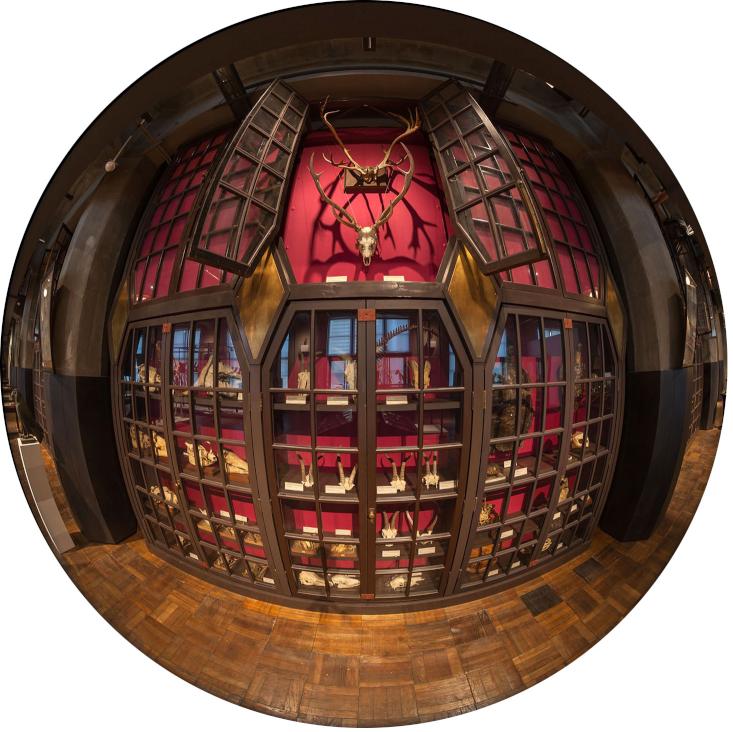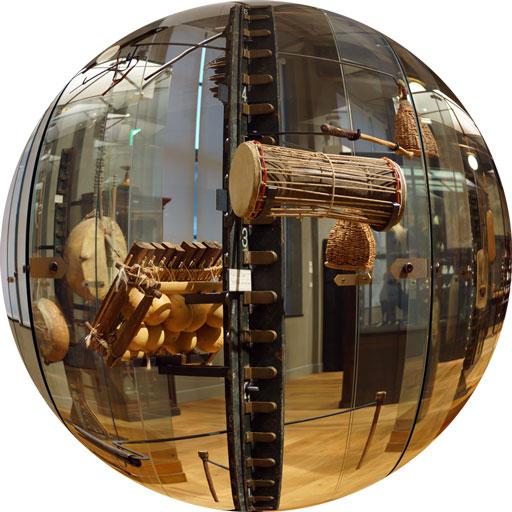Permanent Exhibition "Made in UMUT – The University of Tokyo Collection"
2013.03.21-2023.06.25
COLONNADE 2 COLONNADE 3
Since its foundation in 1877, the University of Tokyo has accumulated a considerable scientific and cultural heritage. Such historical specimens are most certainly an important heritage from the past. However, at the same time, they constitute a resource which we should activate now while facing the future. In order to demonstrate this, we have collected as much historical heritage as possible, and modified its design for a new use, in accordance with our contemporary needs, in the name of a process called ReDESIGN+. Just as the Intermediatheque is built on the reincarnation and inheritance of the former Central Post Office, we have renovated this ancient building and given it a new life as a museum. Nevertheless, this does not imply that we have to consider ReDESIGN+ as a bare revamp activity. In the same way as the etymological meaning of the word design, ReDESIGN+ deals with the problem of appearance at the same time as it raises epistemological issues on our view of things and our view of the world. As for the spatial distribution of the exhibits, we deliberately avoided the common method of setting up a visiting route. What the Intermediatheque aims at is providing a museum space where visitors, and especially younger generations, can experience a direct visual contact with exhibits, in an encounter full of discoveries and astonishment.
Considering the fact that the architecture of the former Post Office building is representative of early Showa modernism, the permanent and semi-permanent exhibition spaces were designed so as to produce a retromodern atmosphere. Respecting the building’s original design, we have adopted an eclectic design principle stimulating our 21st-Century sensitivity, tentatively named retrofuturism. We thus intend to present to our visitors a period bridging three centuries, from the 19th to the 21st Century. Such is the base of our design strategy for the Intermediatheque. With such a scheme in mind, we have actively redesigned and reused the prewar wooden furniture that was accumulated in our museum. On the other hand, a modern sensitivity is created through the use of showcases made of thick green glass and designed in a retromodern style. These are a fruit of the research conducted in product design at the Intermediatheque.
On the basis of our fundamental ReDESIGN+ concept and our retrofuturist key tone, the core of the permanent exhibition is made of the scientific specimens in natural and cultural history preserved by the Research Department and the 17 Collection Departments of the University Museum, the University of Tokyo (UMUT). The permanent exhibition offers the stage for the first public exhibition of large-sized specimens of contemporary animals such as a Minke whale, a giraffe, a false killer whale, a red deer and a sea lion, as well as the mythical and now extinct Aepyornis giant bird (commonly named Elephant bird). Moreover, this is also the first formal public exhibition of animal skeleton specimens and educational wall charts which formerly belonged to the Faculty of Medicine.
Visitors will also be able to see meticulous replicas of historical specimens which transcend the limits of specialized research and held a great impact on society. Among them: the now extinct Aepyornis, thought to be the heaviest bird that ever existed; a giant egg of the extinct Moa, the tallest bird ever recorded; a skeletal specimen of the Tomistoma machikanense, considered as the largest crocodile in the world; and also the oldest golden crown on the American continent discovered in the Kuntur Wasi tombs; the first Ardipithecus ramidus fossil which considerably modified our historical vision of human evolution; the large historical diamonds collection made in the 19th Century; the largest gold and platinum nuggets in the world; and the type specimen of the pottery which gave its name to the Yayoi Period.
From a historical point of view, the “Atomic bomb specimens” of the UMUT Department of Petrology and Mineral Deposits are also worth mentioning. Among them, the “lion head” collected at the Urakami Cathedral in Nagasaki by the scientific investigators of the Imperial University of Tokyo is particularly precious in that we can identify its origin. The historical scientific and cultural collections from the Meiji, Taisho and early Showa eras which were formerly preserved at the UMUT Koishikawa Annex are also exhibited, along with their original furniture.
Furthermore, collections belonging to institutions and groups outside the University were also entrusted to us, through deposits and loans. Among them, we can mention the stuffed specimens of the Yamashina Institute for Ornithology (most of them formerly possessed by the Showa emperor), the archeological specimens collected by Namio Egami in Western Asia, the bird and animal specimens from the Oita Wild Bird Museum in Gifu, the Eda collection of large-sized insect specimens, the Takeo Naka old coin collection, the abovementioned Tomistoma machikanense coming from the Harano Agricultural Museum in Amami.
In a society facing its limits in obtaining natural resources and energy supplies, it is no exaggeration to state that the task of redesigning accumulated extant objects is an urging issue confronting humankind. Aware of this, we intend to pursue our activities by further aiming at the fusion of leading-edge technology and traditional crafting techniques. Our slogan, “Made in UMUT”, thus contains a modest but strong message for the generations to come.



